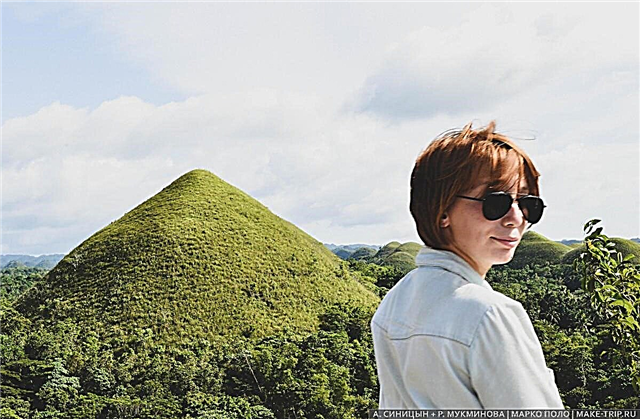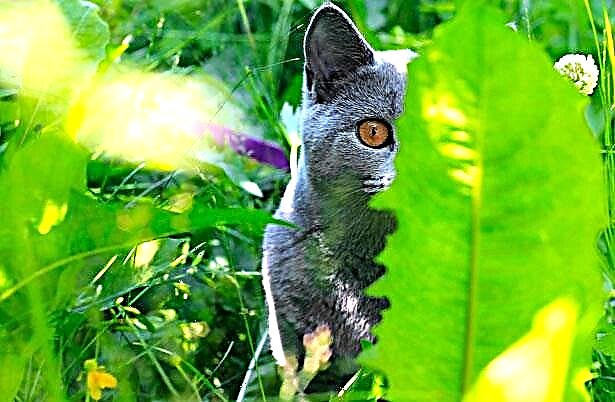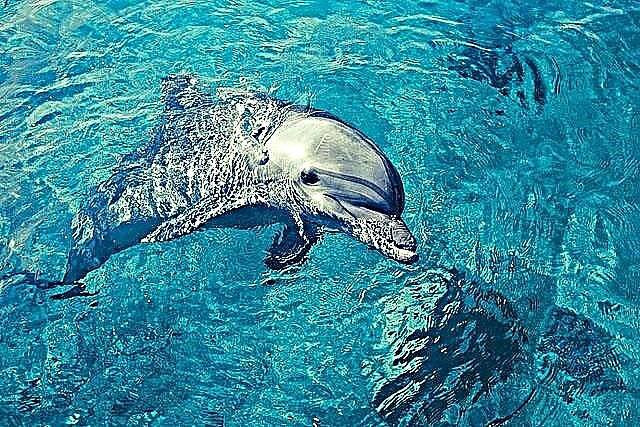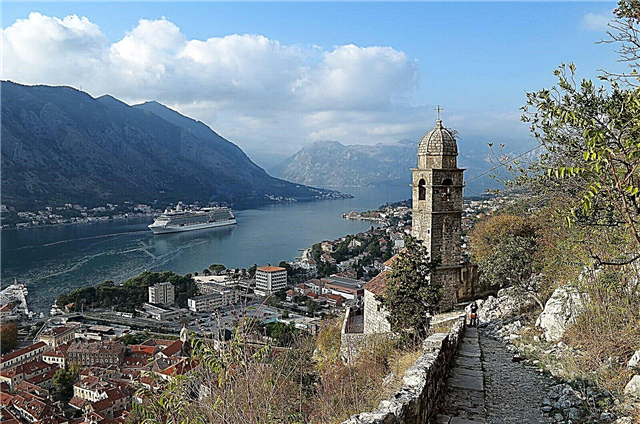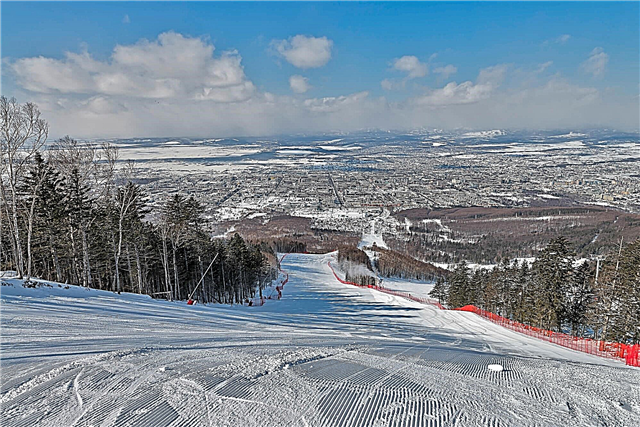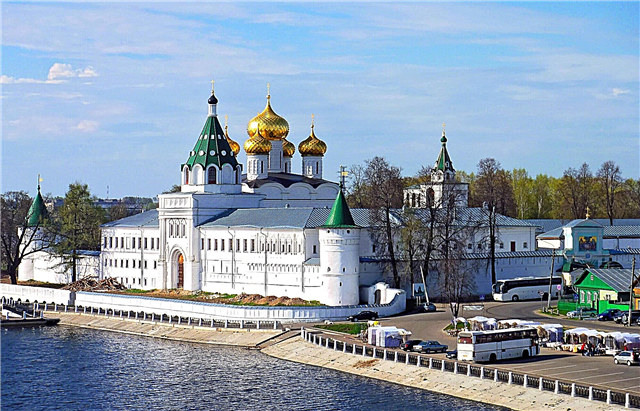The ancient Russian city on the Volga attracts hundreds of thousands of tourists every year, including foreign ones. The most interesting places are located close to each other, so you can see the iconic sights of the city in 1-2 days. There are old merchant mansions, museums, masterpieces and architectural monuments. Particularly interesting are ancient churches and monasteries, for example, the Ipatiev Monastery, which is called the "cradle of the Romanov dynasty."
Special attention is paid to fairy tale characters and folk traditions in Kostroma. In honor of the Snow Maiden, not only a monument was opened, but also her tower was built with an amazing fabulous atmosphere. Unusual places are Berendeyevka Park and the Terem Berendeya Museum, as well as the Forest Miracle Museum. You can get acquainted with the products of Russian masters in the Petrovskaya Toy Museum or the Flax and Birch Bark Museum.
The most interesting and beautiful places
List, photo with names and descriptions of popular sights of the city.
Fire Tower
The tower, 35 meters high, is located on Susaninskaya Square in the city center. The construction is admirable - the stone building is made in the form of an antique temple. The high tower is surrounded by living quarters and barns. The unique architectural monument is protected by the state and UNESCO. Currently, the building houses a museum of firefighting, guided tours of the historical complex are conducted for visitors.

Read about all the top places in the region: the main attractions of the Kostroma region
Holy Trinity Ipatiev Monastery
Presumably founded at the end of the XIV-beginning of the XV centuries. It is located in a picturesque place at the confluence of the Kostroma River with the Volga. It was in this place that Mikhail Romanov was when the people chose him as the new king of the state. After that, each sovereign of the Romanov dynasty for several centuries presented the monastery with rich gifts. It contains church relics, valuable historical items - books, paintings, icons.

Susaninskaya square
The construction of the central square of the city began at the end of the 18th century. The architectural complex of the square consists of several beautiful architectural structures - a fire tower, a building of public offices, a shopping arcade, Borshchov's house, a guardhouse. The key buildings of the architectural ensemble were built in the 19th century. A monument to Ivan Susanin is erected in the park. Streets radiate from the square in rays.

Romanov Museum
The museum has a large collection of antique exhibits. Most of them tell about the history and activities of the Romanov dynasty, as well as the Time of Troubles, the Godunovs. Some of the expositions show the life and everyday life of the urban boyars, the traditions of the noble society. The museum was opened in 1913 and Nicholas II became its first visitor. The building is made in the form of a white-stone tower with luxurious interior decoration.

Museum "Collection of the Nobility"
Located in a building built in the 19th century as a residential mansion. The first large exposition of the museum tells about the secular and private life of Russian nobles. The second extensive exhibition area shows the history of Kostroma since ancient times, household items of townspeople of different classes are presented. Interiors have been recreated using original objects, for example, a merchant's bedroom or an aristocrat's office.

Museum-reserve "Kostromskaya Sloboda"
Ethnographic landscape museum dedicated to wooden architecture. Founded in 1955. The museum is located on the territory of the Ipatiev Monastery, several objects are located outside its walls. Masterpieces of Russian architecture were brought from all over the region. A wooden church of the 16th century, dwelling houses, outbuildings, a bathhouse on stilts, a mill are presented. In some buildings, the setting has been recreated, showing the way of life of the past.

Drama Theater named after A. N. Ostrovsky
One of the oldest theaters in the country is housed in a classical-style building, built in 1863. Honored and People's Artists of Russia are involved in the troupe of the theater. The repertoire consists of classical performances of world drama. In each season, performances are staged based on Ostrovsky's plays. Performances for children are performed on the small stage. Since 1973, the annual Russian festival "Ostrovsky Days in Kostroma" has been held.
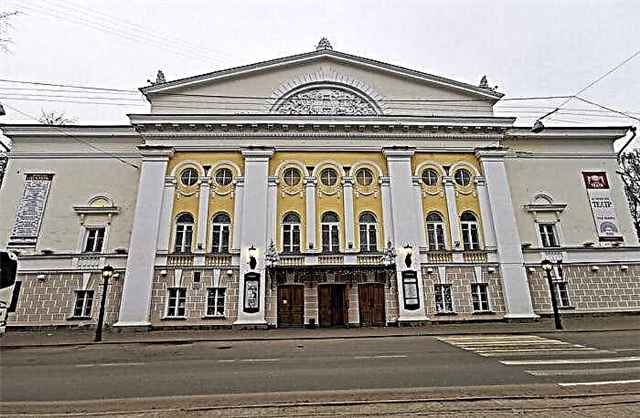
Volga river embankment
A large number of city attractions are located along the embankment - ancient monasteries, restored churches of the Kostroma Kremlin, parks, museums, Ostrovsky's pavilion, a historic river pier. From the river station you can go on a boat trip both on cruise ships and on small boats. There is a beach area, bike rental, benches and lamps, stylized "antique" are installed.

Park "Berendeevka"
Residents of the city appreciate the park for a special atmosphere of peace and quiet, picturesque nature. In recent years, the park has been actively developing. Wooden buildings were built in the original Russian style, in which the hotels are equipped. They are surrounded by a pine forest, nearby there are ponds with an equipped beach area. There are boats and catamarans for rent, wakeboarding services. There are pedestrian and bicycle paths in the forest.

Terem of the Snow Maiden
The residence of the granddaughter of Santa Claus is one of the most visited places in Kostroma by tourists. A fabulous atmosphere has been recreated on the territory of the entertainment complex - a boulder at a fork, a mini-bell tower, a swing, a gazebo. In a two-story mansion with carved platbands, guests are greeted by the hostess's assistants - the cat Bayun and the brownies. Puppet shows are shown in the parlor. Conduct a Frosty tour of the Ice Room.

Architectural landmarks of Kostroma
Monuments of architecture and urban planning, interesting buildings and structures.
Ostrovsky's gazebo
One of the symbols of Kostroma, located on the Volga embankment. The gazebo was erected in 1956 on a high embankment left over from the earthen rampart of the Kostroma Kremlin. The architectural style resembles garden pavilions in old Russian estates - an elegant round roof rests on seven columns. The gazebo offers a wonderful view of the river landscape. The luxurious gazebo was used in the filming of Cruel Romance.

The building of the former guardhouse
Built in the 19th century in the Empire style. Its graceful exterior is one of the adornments of Susaninskaya Square. The architect Fursov paid special attention to details - columns, molded cornices of the portico and cornice, images of lion masks and Medusa the Gorgon. Currently, the building houses a hall of military history, where weapons, award badges and orders, military documents, photographs, uniforms are displayed.
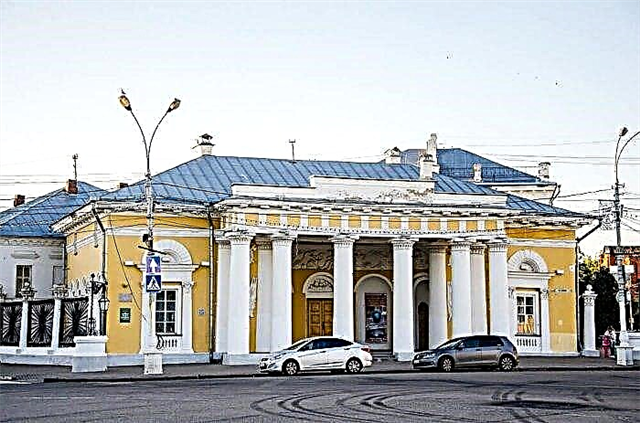
Borshchov House
An architectural monument of the early 19th century. It belonged to Lieutenant General Borshchov, but the mansion received its luxurious appearance under the merchant Pervushin. It was he who rebuilt the house in the classicism style. The luxurious exterior of the mansion forms a single architectural ensemble with other buildings on Susaninskaya Square. The main facade of the building, overlooking the square, is decorated with Corinthian columns and a large pediment.

Building of Public Places
The public building in the classicism and empire style was erected at the beginning of the 19th century. It was rebuilt several times, the last addition was already in Soviet times, when the extension to the building was extended. The facade of the building is especially beautiful. The main entrance is decorated with two pairs of columns installed on pedestals. Above the entrance, there is a large window of an original form with fan-shaped glass. Now the building houses the city administration.

Obelisk "Moscow Outpost"
Built on the Volga embankment, at the entrance to the city for guests arriving by river.Two quadrangular obelisks are crowned with two-headed gilded eagles and balls. They are adjoined by small walls with arched niches. The obelisks are 9 meters high. The design of the outpost with obelisks was carried out by the architect Fursov. The front view of the outpost was ready in 1823 for the arrival of Emperor Alexander I.

Shopping arcade
The construction of a complex of merchants' shops began in 1775. The construction was finally completed in the 19th century, when wooden buildings were replaced with stone ones. The center of the complex is Gostiny Dvor, which consists of 86 shops. The largest structure was the Big Flour Rows, the corners of the buildings of which were rounded to make it easier for passing carts to turn. Tobacco, Meat and Kvass rows were also erected.

Cultural landmarks of Kostroma
The most interesting and visited museums in the city, which are worth visiting.
Cheese museum
Started work in 2017. Located in a merchant's mansion of the 18th century in the historic center of the city. The opening of a museum with a similar theme is no coincidence, because Kostroma is often called the “cheese capital of the country”. Museum tours are interactive. The exposition occupies two floors. Guests are told about the history of cheese making, types of cheese, and interesting facts are given. There is a souvenir shop at the museum.

Museum and Exhibition Complex "Terem Berendeya"
Dedicated to the people who once lived on this land - the Berendeys, as well as ancient beliefs, legends and traditions. The atmosphere of the museum and the stories of the guide help visitors to immerse themselves in ancient Russian history. On the territory of the museum there are wooden figures of ancient Russian deities. Guests are offered for inspection ancient instruments from various fields of activity, ethnic household items, ancient rituals are performed.

Museum of jewelery art
For more than 200 years jewelry has been made in Kostroma, this is the reason for the creation of the museum. The museum has exhibits dating from the 18th century. In total, the museum exhibits about 1000 jewelry. Among other jewelry masterpieces, the products of local craftsmen in the "Krasnoselskaya filigree" style stand out. There are exhibitions designed in the form of a 19th century master jeweler's workplace and a jewelry shop.

Forest Wonder Museum
The building of the museum is made in the Russian style - it is a two-storey building with a figured roof and carved platbands. Three halls of the museum tell about the riches of the forest, folk fairy tales and the art of Russian blacksmiths. Workshops on folk crafts and interactive excursions are held for guests. The territory of the museum is decorated with flower beds, there are gazebos, figures of forest inhabitants and fairy-tale characters.

Museum of flax and birch bark
The founder of the museum is a local needlewoman, who keeps the ability to make products from flax and birch bark. A small weaving factory has been established here, where sundresses, shirts, and towels are made. Guests are shown both the products themselves and are told about the technology of their manufacture. In the birch bark hall, they demonstrate bast shoes and household utensils. For those wishing to conduct master classes teaching weaving from birch bark, you can buy handmade products.

House-Museum "House of the Mayor G. Botnikov"
A private museum dedicated to one of the most famous mayors of Kostroma. In the old mansion of the museum, the interiors of the old manor have been recreated. Some of the exhibits can even be touched with hands in order to fully experience the atmosphere of everyday life of merchant life in the provinces. The guides talk about the life of the mayor, as well as about the peculiarities and traditions of the past era. In total, the museum has 9 rooms and a small gallery of paintings.
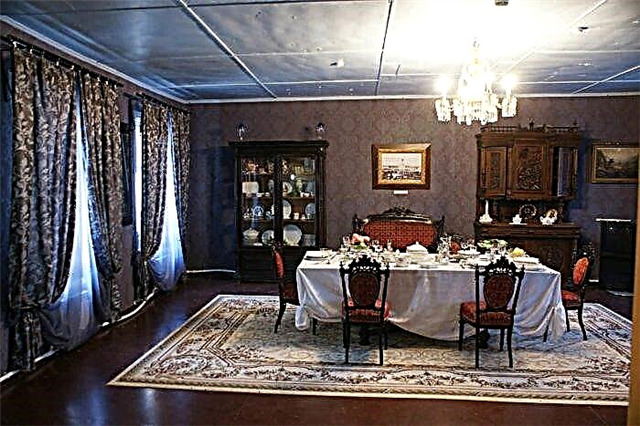
Museum "Petrovskaya Toy"
It will be interesting not only for children, but also for adults. Famous masters of pottery used to live in the village of Petrovo. They created amazing whistles, kitchen utensils, vases, pots. The collection of the museum is unique and has no analogues. More than 1000 toys are presented not only by local craftsmen, but also by craftsmen from all over the country. Master classes are held in the museum. Guests can make their own simple clay toys.

Church Historical and Archaeological Museum
Located on the territory of the Ipatiev Monastery. The museum funds contain old church books and icons, engravings, art objects, archaeological exhibits. The basis of the museum's exposition is made up of items related to the royal dynasty of the Romanovs. They conduct excursion programs around the monastery and Trinity Church, with a tour of unique expositions. In total, there are about 3000 exhibits.

Kostroma State Circus
The circus in Kostroma has existed for over a century, but it received its own building only in Soviet times. Currently, the circus is equipped with modern technology and a comfortable hall. This allows high-level shows with the participation of world circus stars. Stage equipment allows you to organize unusual concerts, for example, shows on the water or on ice. Every season the local circus ensemble presents a new program.

Places of worship - monasteries and temples
Places of power, beautiful religious buildings with an interesting history.
Epiphany-Anastasiin Monastery
Convent founded in the 15th century. On the territory of the monastery there are the diocesan administration and the theological seminary, but the passage is allowed only to the Epiphany Cathedral and the chapels. The Epiphany Cathedral of the monastery is a cathedral. It was founded in the middle of the 16th century and is the oldest surviving temple of the monastery. It contains one of the shrines of the Romanovs' house - the Feodorovskaya icon of the Mother of God.

Church of the Resurrection of Christ on Debra
It was founded in the 17th century and is the only Kostroma posad church of that time. The stone church was erected on the site of a wooden church by masters from Veliky Ustyug and Yaroslavl. At the beginning of the 20th century, after restoration, the church was visited by Emperor Nicholas II with his family. In Soviet times, a military warehouse and a granary were set up in the church. During the restoration of the church, a five-tiered bell tower was also rebuilt.

Znamensky Convent
One of the youngest monasteries in the city is located on the left bank of the Volga. The main church of the monastery - Znamenskaya - was first mentioned in the 17th century. The monastery itself was founded in 1993. The Church of the Sign, together with the bell tower, was almost completely destroyed in Soviet times, it was restored according to old sketches. The decoration of the monastery is the richly painted Church of the Resurrection of Christ on Debra.
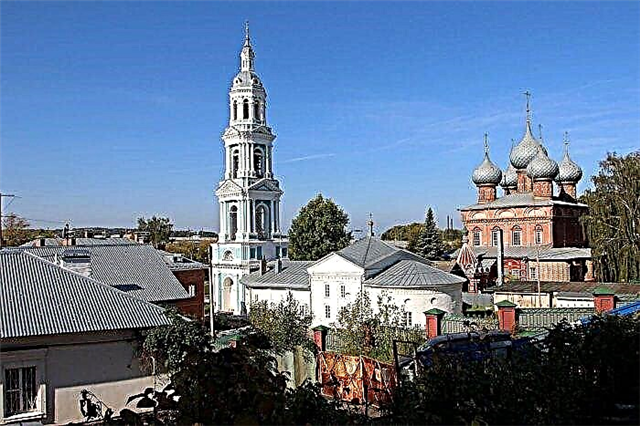
Church of the Savior in Ryady
It is located among the architectural complex of Torgovy Ryad. It was built in the 18th century at the expense of the patron S.S. Belova. A few years later, during the reconstruction of the shopping complex, a new bell tower in the Baroque style was erected near the church. However, in Soviet times, both the bell tower and the head of the temple were dismantled. The restoration of the historical appearance of the church took place at the end of the 20th century. Now the building houses one of the halls of the city museum.

Temple of Alexander and Antonina of Rome in Selishche
An ancient temple built in the 18th century on the outskirts of Kostroma. Information about the temple has been preserved thanks to the chronicles kept by the priests. Divine services in the temple never stopped, despite its complete sacking in 1922. However, the church interior has been preserved. The famous icon painter of the last century N.I. Demidov. The temple was built in the Baroque style; its bell tower has 12 bells.

Church of St. John the Theologian in Ipatievskaya Sloboda
The Orthodox Church near the Ipatiev Monastery was first erected in 1652. However, the wooden church burned down after a few years and a solid stone building was erected in its place, which was subsequently rebuilt several times. Currently, it is a five-domed temple with a hipped bell tower. The main feature of the church is the painted interior walls. The artists are residents of the Ipatievskaya Sloboda.

John Chrysostom Church
A wooden church in the historical center of the city appeared in 1628, and a stone church was erected here in the middle of the 18th century. It attracts tourists with a combination of different styles. The five-domed temple was built in the style of pre-Petrine architecture. But in the external decor features of the Baroque are more manifested. Later, new chapels were added to the church, as well as a three-tiered bell tower. These buildings were built in the style of late classicism.

The most famous monuments and memorials
Historical monuments, monuments to famous people, sculptures decorating the streets and squares of the city.
Monument to Ivan Susanin
The first monument to Susanin was erected about one and a half centuries ago. However, the Soviet authorities did not like the kneeling pose of the peasant in front of the tsar and the monument was dismantled and later destroyed. A new monument to the national hero was erected only in 1967. This is the image of a strong, tall man, with a beard, staff and long clothes. The monument is located on Molochnaya Gora, its face is turned to the Volga.

Monument to Yuri Dolgoruky
The monument to the Grand Duke is located in the center of the city. It was installed on the site of a memorial stone with a capsule filled with earth from the prince's grave in the Kiev-Pechora Lavra. The height of the monument is 4.5 meters, weight is more than 4 tons. The sculpture depicts the prince sitting on a wide bench and stretching out his hand towards the Volga and the Trade Rows, as if showing where the city should be laid. The sculptor is V.M. Tserkovnikov.

Sculpture of the Snow Maiden
Installed in 2015 next to the city hall. The author of the project, sculptor Eremin, depicted in bronze a young girl in a fur coat and with a crown on her head. A long braid is thrown over the shoulder of the Snow Maiden, it is surrounded by forest birds and animals. It is believed that touching the bird on the Snow Maiden's hand or on the girl's nose will bring good luck. The height of the figure together with the pedestal is 1.5 meters. Santa Claus was present at the opening of the monument.

Monument to V.I.Lenin
The monument to the politician is erected on a pedestal that looks more like a crypt or burial vault. In 1913, it was assumed that a monument with 26 historical figures would be erected on it in honor of the 300th anniversary of the reign of the Romanov dynasty. However, during the revolution, the finished, but not yet installed, bronze figures of the royal family were sent to be melted down, and a monument to Lenin was erected on the pedestal.

Glory Monument
The monument to Soviet soldiers was erected on Peace Square in 1972, on the Victory Day. It depicts a young warrior rescuing a teenage boy. The sculptors of the monument are Levitskaya and Baburin, the architect is Kutyrev. Every year on May 9, solemn rallies and parades are held at the Monument of Glory, war veterans and residents of the city gather to lay flowers and honor the memory of the fallen soldiers.

Memorial "Eternal Flame"
Located on Prospekt Mira. The basis of the memorial complex is represented by several high pylons of white marble, against which a sculpture of the Motherland laying a wreath and a soldier is installed on the pedestal. At the foot of the pedestal there is a bronze star, in the center of which the Eternal Flame is burning. The names of the soldiers buried in the mass grave are engraved on the granite slabs. There is a chapel nearby.

City gardens and parks, recreational areas
Beautiful places to walk in the city and relax in the fresh air.
Central park
Located on the territory of the former Kostroma Kremlin. The park's observation deck offers a beautiful view of the embankment and the Volga River. There is a monument to Lenin next to the site. A beautiful stone staircase leads to the river pier. There is a small area with attractions - trains, a pool with mini-boats, Orbit, cars. Festive events are often organized with performances by local musicians.

Shagovsky pond
A small pond is located almost in the center of the city. It is believed that the pond was founded artificially in the 17th century for the needs of the smithy and was called Kamevsky, after the owners of the smithy. For a long time, the pond was abandoned. Currently, the area around it is clean and comfortable - there are walking paths, benches are installed. There are ducks in the lake, which gladly accept treats. In winter, a skating rink is installed on the pond.
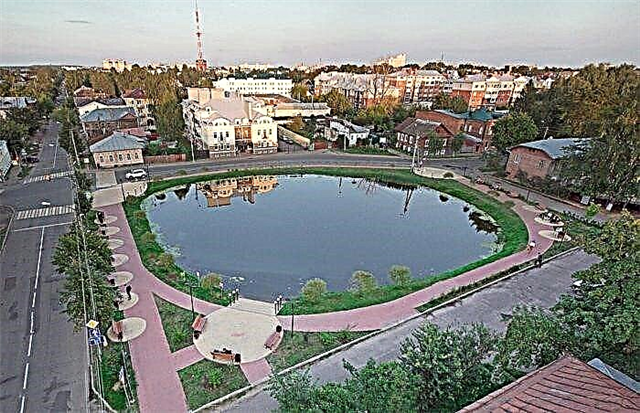
Victory Park
The park was opened in honor of the 65th anniversary of the Victory in the Great Patriotic War. It is located in the Davydovsky microdistrict. The park houses an exhibition of military combat equipment - aircraft, cannons, tanks, a front road and dugouts. All equipment can be touched with your hands. The landscaped area has pedestrian and bicycle paths, sports and playgrounds. Mass city holidays are often held here.

Central city beach
Located next to the Volga River embankment. The beach is equipped with everything you need for a comfortable stay by the water - there are changing cabins, a toilet, sun umbrellas, sun loungers, benches, beach volleyball nets, sports grounds. The sandy beach has a wide coastline. The entrance to the water is shallow, but there are holes. There are small grocery stores near the beach. The beach is crowded on hot days.

Attractions in the vicinity of Kostroma
Interesting places to go by car near the city.
Manor "Sledovo"
A noble estate 25 km from Kostroma, which has retained its atmosphere and flavor, despite the past centuries. It was built in the 18th century and belonged to the noble family of the Kartsevs. At present, in the preserved park of the estate, rock gardens and picturesque flower beds are laid out, thousands of shrubs and trees have been planted. In June, when hundreds of flowers begin to bloom, the estate hosts the annual Flower Ball.

Museum of Jewelry and Folk Applied Arts
Located 35 km from Kostroma, in the village of Krasnoe-on-Volga. The basis of the museum collection is the products of the masters of the Krasnoselskaya filigree. One of the permanent exhibitions exhibits old frames, including those of the 12th century. An interesting exhibition about the history of the Kostroma jewelry art. The exposition of the Golden Fund presents exclusive jewelry, works of graduates of the local jewelry school.

Sumarokovskaya moose farm
It is located on the territory of the Sumarokovsky nature reserve, 22 km from Kostroma. The moose farm is incredibly popular with tourists.Here you can not only meet amazing animals, but also buy incredibly healthy moose milk. The farm is open to the public all year round; there are two sites - summer and winter. A visit is possible only with a guide who will allow you to pet and feed the animals.



